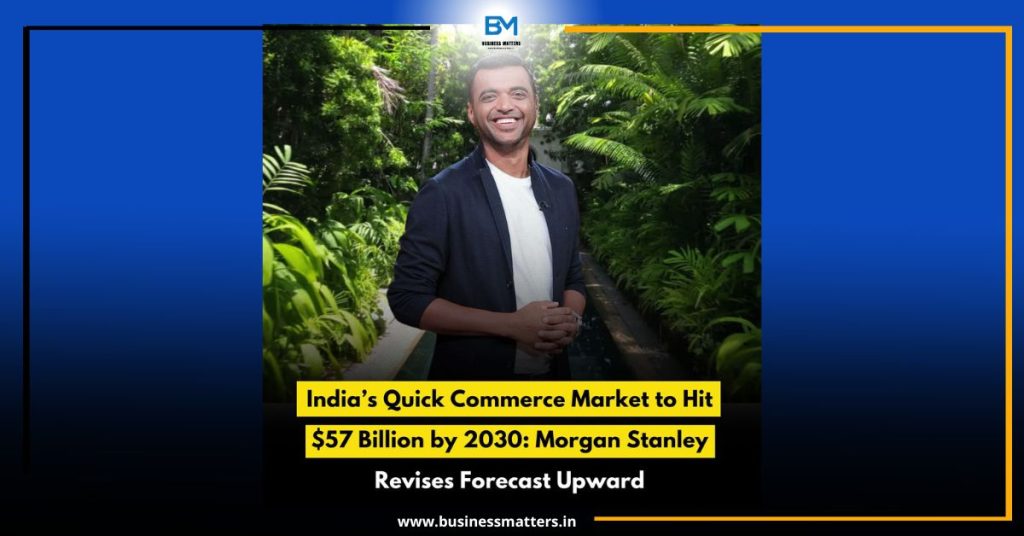India’s quick commerce market is on a remarkable growth trajectory, with the total addressable market (TAM) now expected to reach $57 billion by 2030, according to updated projections by global brokerage firm Morgan Stanley. This marks a substantial jump from its earlier forecast of $42 billion, signaling a significant surge in consumer demand, platform expansion, and changing shopping behavior.
Read Also :- Fintech Unicorn Moneyview Converts to Public Company Ahead of Anticipated IPO
The brokerage attributes this optimistic revision to four key growth drivers:
- Deepening penetration of online grocery through quick commerce platforms
- Sharp increase in monthly transacting users
- Geographic expansion into 100+ non-metro cities using localized delivery models
- Growing consumer dependence on the 10-minute delivery format
Quick Commerce Redefining Urban Retail
Quick commerce, which offers delivery of groceries and daily essentials within 10–20 minutes, has rapidly evolved from a convenience feature to a full-fledged urban shopping habit. Platforms like Blinkit (owned by Zomato) and Swiggy Instamart are now central to the digital grocery experience for millions of Indians.
According to Morgan Stanley, Eternal, the parent company of Zomato and Blinkit, currently leads the market, with average annual user spending reaching $300. Swiggy Instamart follows with an average user spend of $250 per year. These figures indicate high engagement levels and strong user retention, reinforcing the potential of quick commerce to drive recurring revenue.
Rural & Tier 2+ Cities: The Next Growth Frontier
While the quick commerce wave initially swept through India’s top 10 cities, platforms are now tailoring their offerings for Tier 2 and Tier 3 cities, where internet penetration and smartphone usage are on the rise. By implementing localized dark store models and region-specific product assortments, platforms are tapping into an underserved yet rapidly growing market.
This expansion beyond metros is a key factor in Morgan Stanley’s upward revision. The brokerage notes that regional customization and operational efficiency will be crucial in maintaining delivery speed while scaling profitably.
Consumer Spending Patterns to Surge
Morgan Stanley also estimates that by 2030, the average Indian household will spend $1,630 annually on quick commerce platforms, while individual user spend is expected to touch $1,000. These numbers highlight the evolving role of quick commerce from an emergency solution to a daily shopping habit.
Convenience, time savings, and consistent user experience are driving this behavioral shift, making quick commerce a staple in India’s e-commerce ecosystem.
Future Outlook: Tech, Logistics & AI to Play a Key Role
As the market matures, innovations in AI-driven inventory management, real-time demand forecasting, and hyperlocal logistics will likely redefine the cost and service efficiency of quick commerce platforms. Companies investing in robust tech infrastructure and regional partnerships will gain a competitive edge.
Conclusion
With an updated forecast of $57 billion by 2030, the Indian quick commerce market is poised to become one of the largest globally. As players expand into newer geographies and deepen engagement with existing users, quick commerce is no longer just a trend—it’s the future of Indian retail.


